THRANGU TARA ABBEY
A Nunnery For Buddhist Nuns in Swayambhu, Nepal
Founded in 1992 by The Very Venerable Ninth Khenchen Thrangu Rinpoche.

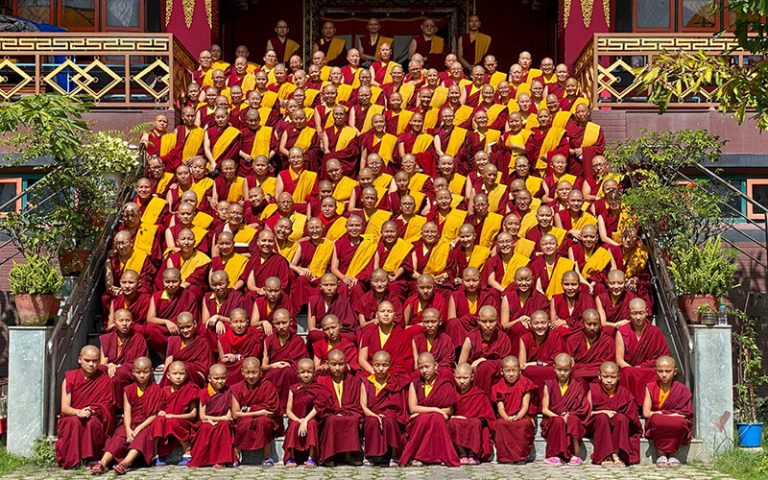

Table of Contents
About the Nunnery
Founded in 1992 by The Very Venerable Khenchen Thrangu Rinpoche, Thrangu Tara Abbey is a monastery for Buddhist nuns located on the outskirts of Kathmandu near the famous Swayambhu Stupa. Swayambhunath is an area known for its abundance of monasteries, temples and large community of Tibetans and other Himalayan people. By virtue of the generosity of many sponsors, the Tara Abbey temple was completed and consecrated in December 2009, and officiated by H.E. Jamgon Kongtrul Rinpoche and Khenchen Thrangu Rinpoche.
The temple hosts a large main shrine room, Nyungne shrine room, Tara shrine room, library, and a suite for Thrangu Rinpoche. The dining room is on the ground floor and dorm rooms fill two wings on either side of the temple. There are also two additional dorms on the property, one of which also has a teaching hall.
There are currently 274 TTA nuns, most come from the northern areas of Nepal but there are also many from Tibet, India and Bhutan. The girls must be at least 7 years of age to be accepted at the abbey, though they may begin at any time of life. After enrollment, the nuns begin to receive basic education and preliminary studies such as reading and writing Tibetan texts. Once they have enough competence in language and other subjects, most of the young nuns attend Thrangu Rinpoche’s Shree Mangal Dvip School (SMD). After attending SMD, the nuns may choose between entering the shedra, a monastic college where they study Buddhist philosophy, or the tsokdra, where they focus on ritual practice while also receiving teachings on important Buddhist texts, or the study of Tibetan Medicine. At the completion of studies, a nun may give service to the Abbey or enter a three year retreat.
In April of 2022, there was a change over in the administration of Tara Abbey. Thrangu Rinpoche appointed Tulku Damchö Rinpoche Chairman of Thrangu Tara Abbey and Khenpo Karma Chogyal the Vice Chairman. The previous Abbot, Khenpo Chonyi, served in the post for 11 years and is currently the Chairman of the monastery in Namo Buddha.
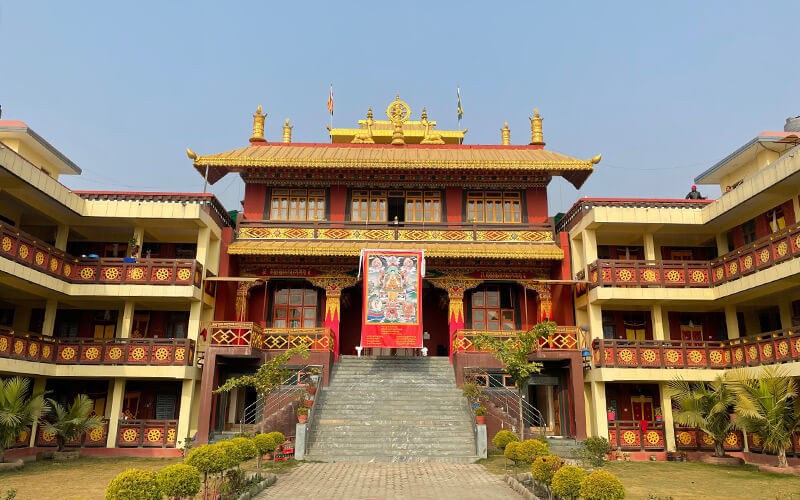
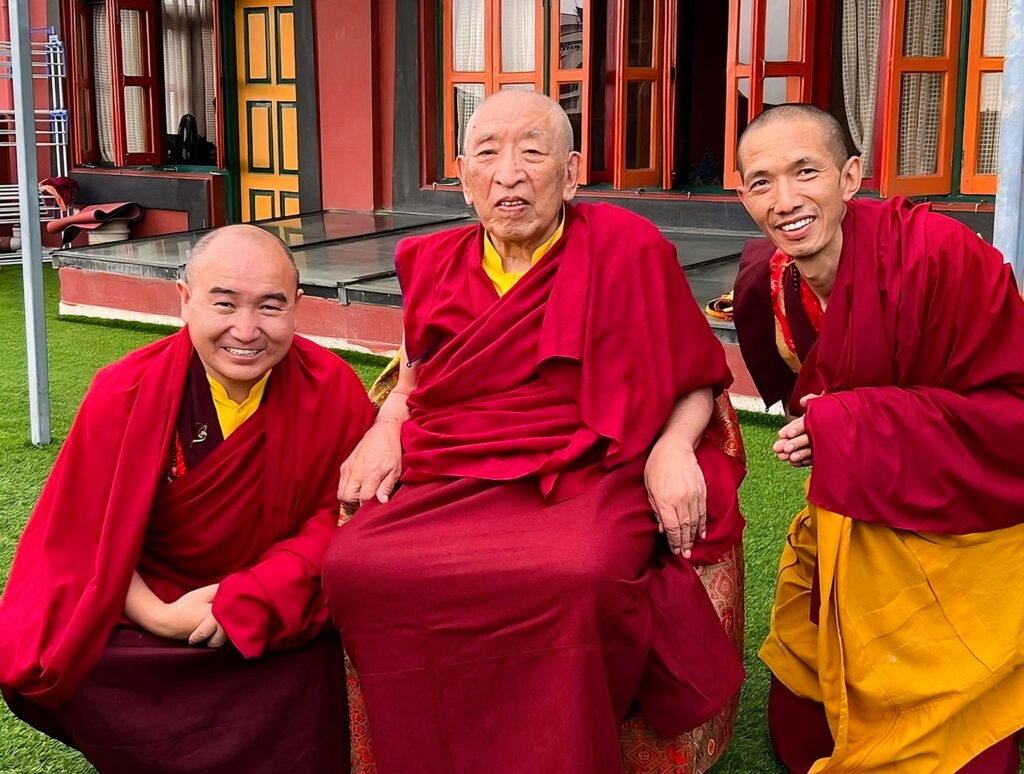
The Purpose
Thrangu Rinpoche had long held the intention to establish a monastic center for women in order to provide them with the full range of monastic, liturgical, philosophical and meditation training that is available to monks.
With this full range of training, the nuns are able to develop fully within their own tradition. Many are becoming teachers, (in the east and the west), thereby helping to preserve and propagate the Buddha’s teachings. In a world where women are becoming stronger, more educated and more involved in all spheres including religion, the development of female teachers is important. As the nuns increasingly become both scholars and yogis they will be a source of inspiration to both women and men.
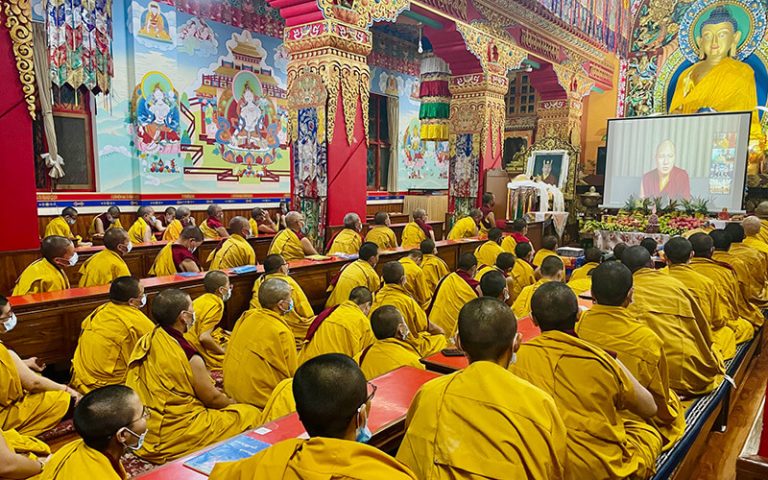


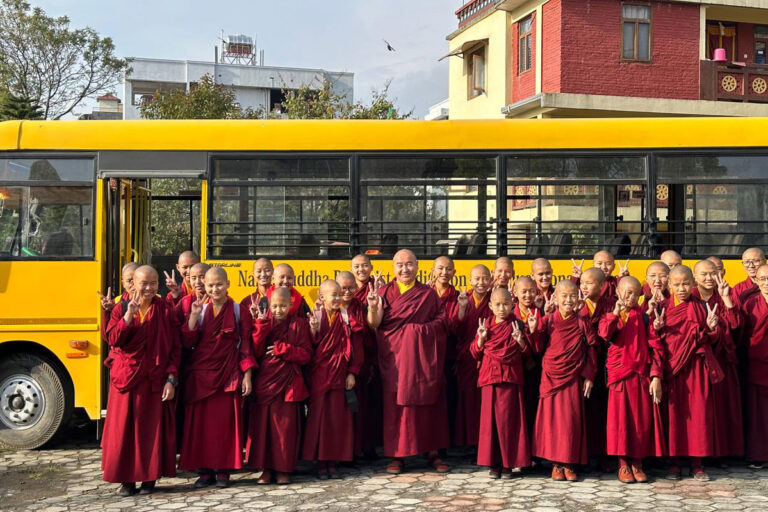
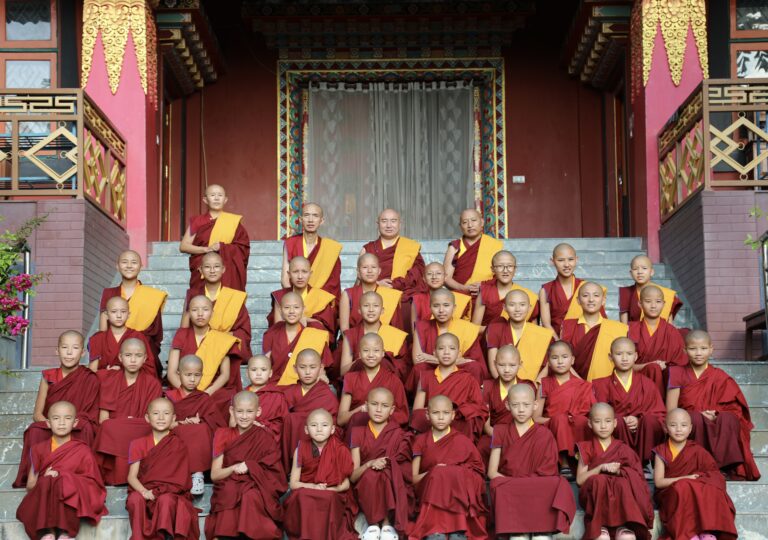
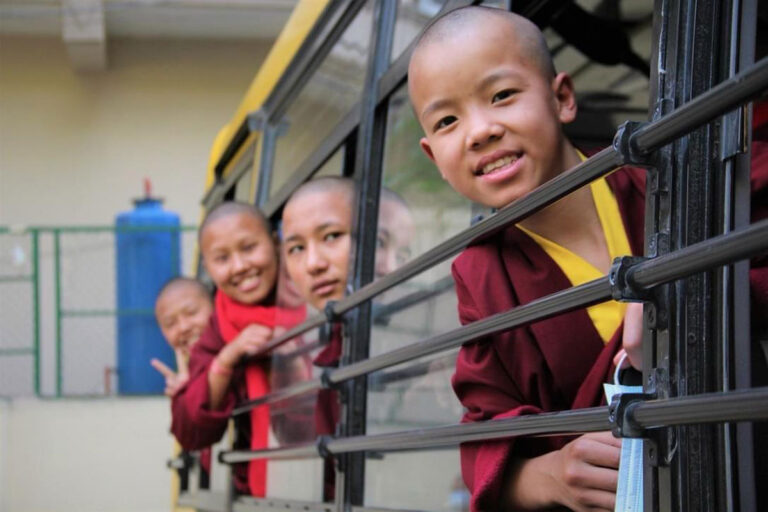
Education
Secular and Monastic education go hand in hand at Tara Abbey. Many young nuns arrive from the remote mountain regions of Nepal having had little or no education due to a lack of schools in their villages. As the nuns begin their training they have classes in Nepali and English, math and social studies at the Abbey. When they are proficient enough to study full time, they attend Thrangu Rinpoche’s school, Shree Mangal Dvip (SMD), in Boudhanath.
Approximately 43 young nuns and their teachers take a bus to and from SMD six days a week. There are also classes at Tara Abbey for older nuns to help improve their proficiency in Tibetan, English, and Nepali. After completing their primary education, the nuns may choose between Toksdra and Shedra studies at the abbey, and a few are pursuing Shedra studies at other monasteries in Dharamsala and South India.
Tsakdra (Nuns Practicing Rituals)

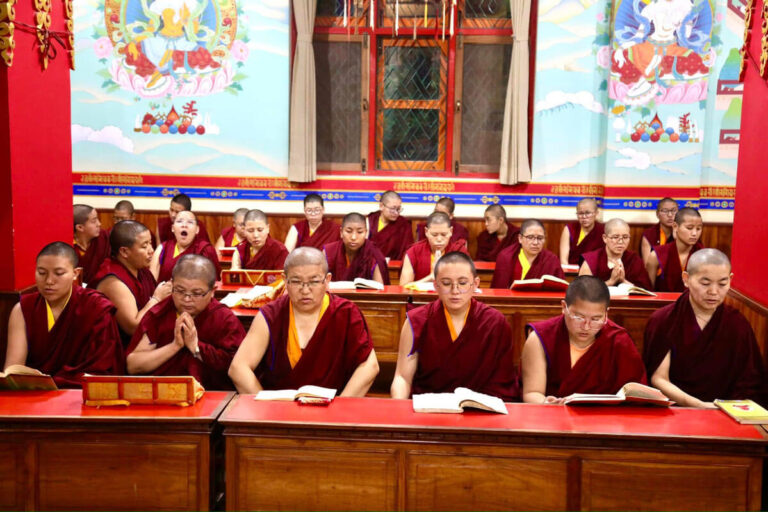


Shedra: Higher Buddhist Studies
Tara Abbey’s monastic college for the study of Buddhist philosophy, known as Thrangu Thoisam Dargyeling, has settled into residence at the Thrangu Monastery in Lumbini which was inaugurated in March 2004. Shedra is a twelve year program of studying, reflecting and meditating the five major Buddhist texts – Abhidharma, Prajnaparamita, Madhyamaka, Pramana and Vinaya. Their curriculum is the same as of that of the Vajra Vidya Institute for monks and they participate in debates and Dharma discussions on a daily and monthly basis.
Several Tara Abbey nuns who hold MA degrees in Higher Buddhist Studies from Central Tibetan Institute for Higher Buddhist Studies in Sarnath, India became the first Shedra teachers. Currently, there are seven nuns and four monks (including one Geshe and one Khenpo) who are teaching shedra students on a daily basis.
In 2012, thirteen nuns became the first graduates of the shedra and began to teach at the Abbey. Since then, a total of 50 nuns have graduated from Thrangu Thoisam Dargyeling Shedra. 70 nuns are currently enrolled and living at the monastery in Lumbini.

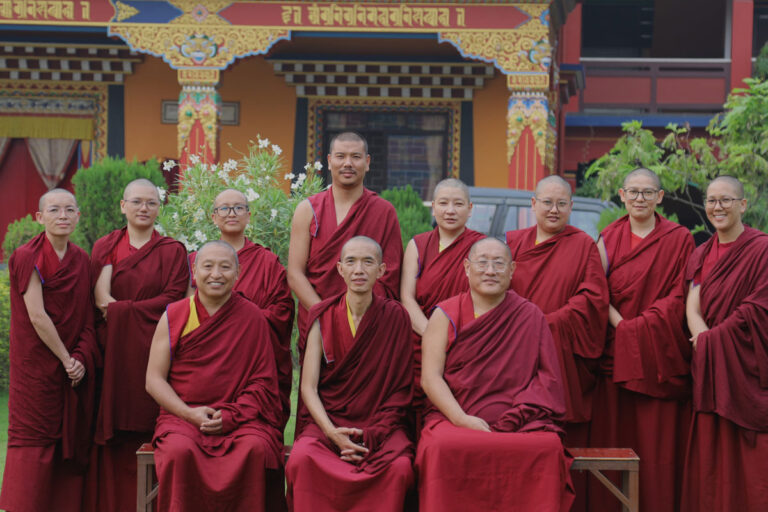
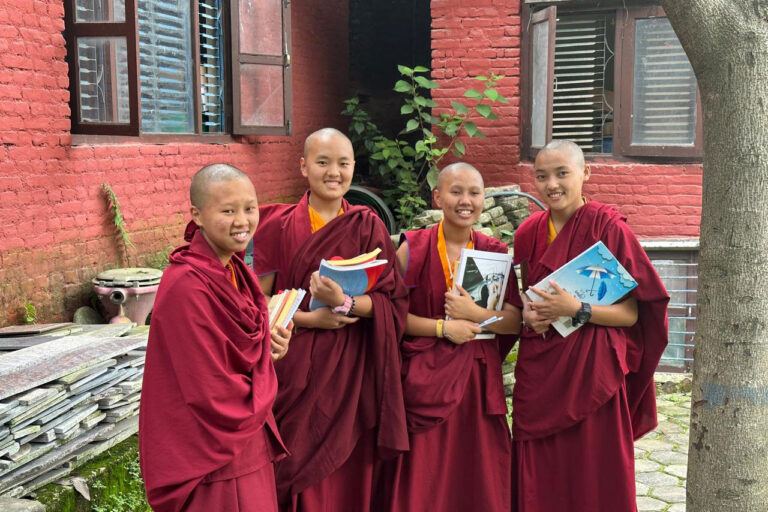
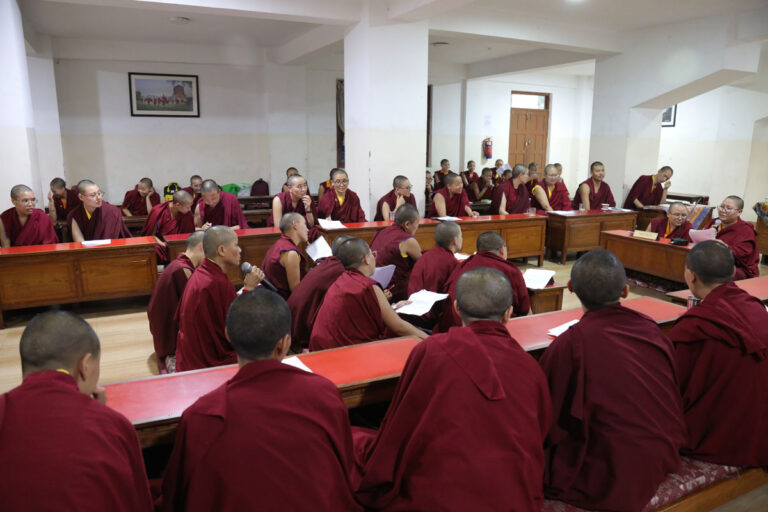
Sher Gompa ~ Retreat Center
Tara Abbey nuns also have the opportunity to enter a traditional three year retreat at Sher Gompa in Manang. Guided by the senior retreat master, Lama Yonten and Ani Palkye Tsomo the daily retreat master, the nuns engage in a full curriculum of study and meditation practice.
(For more on Sher Gompa use this links: View on Browser or download PDF File



Prayer Schedule
Tara Abbey nuns have a regular prayer schedule beginning with daily prayers morning, afternoon and evening, especially Green Tara and Mahakala. There are also special all-day prayers performed according to the Tibetan calendar. The 8th day of each month is the practice of Gyalwa Gyamtso (Red Chenreyzig), and the 10th day is Kunchok Chidu (Guru Rinpoche). There are eight other all day prayers which need to be recited monthly.
During certain times of the year there are special ceremony programs such Vajrasattva, Chakrasamvara and Vajrayogini prayers which last for several days and include the preparation of a sand mandala and the offering of a fire puja. The Kangyur, the collected sutras of the Buddha, is also recited yearly from the 3rd day of the 3rd Tibetan month. Many other pujas and prayers are performed throughout the year at the request of sponsors.
In late summer, the nuns observe Yarne, one of the most important parts of the monastic calendar. During the 45 day retreat, the nuns remain within the grounds of the abbey to deepen their understanding and focus on study, contemplation and meditation. Additionally, the annual Mahakala grand puja is performed for nine days before they welcome the lunar new year which is called Losar.

Tara Abbey Clinic
Tibetan Medical Studies (Sowa Rigpa Amchi Training)
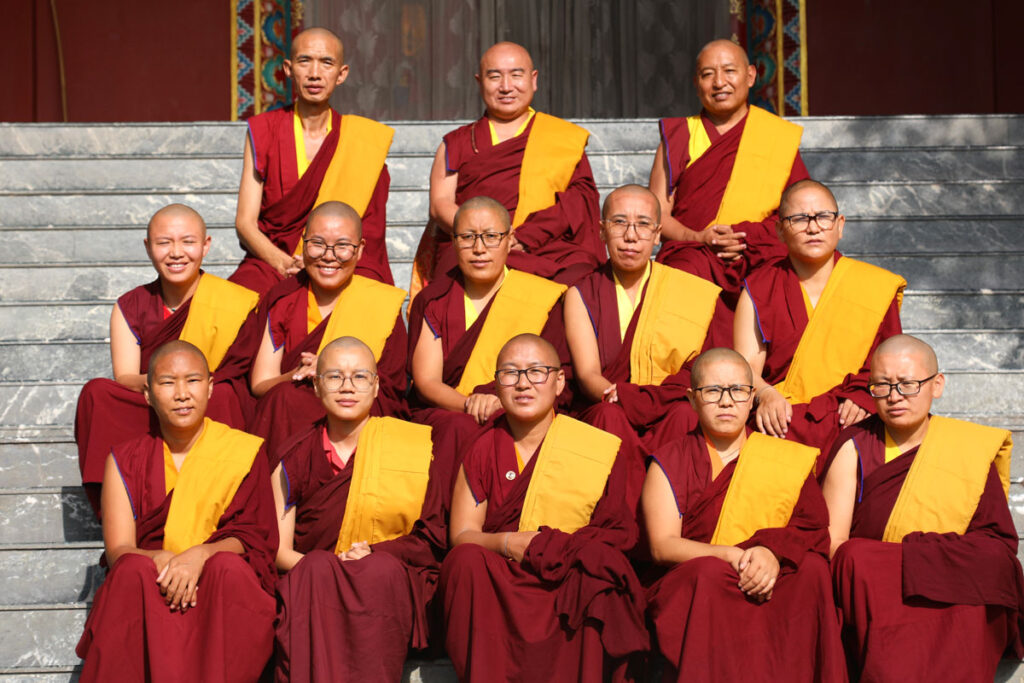
HAND MADE INCENSE
The medical nuns make very special incense. One exceptional ingredient is from precious trees growing in the mountains around Tsurphu Monastery, seat of the Karmapas, in Tibet. The legend is that when the 3rd Karmapa, Rangjung Dorje blessed the mountains with his hair, trees rose up from the hair. These trees are widely known in Tibet for purifying obstacles, expelling evil spirits and bringing good fortune. The incense, which is becoming quite popular, is now being sold in centers and stores in many countries.
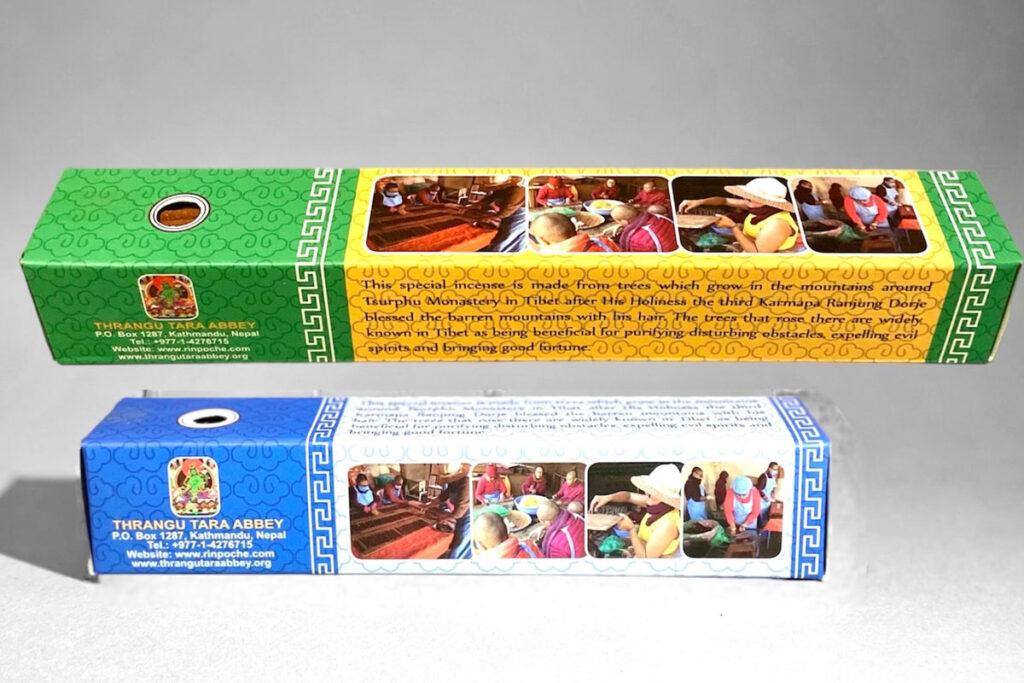
The Eco Club

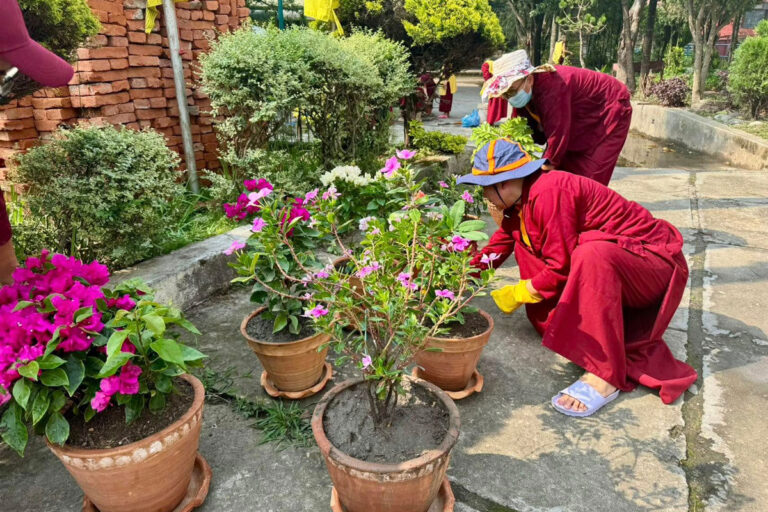
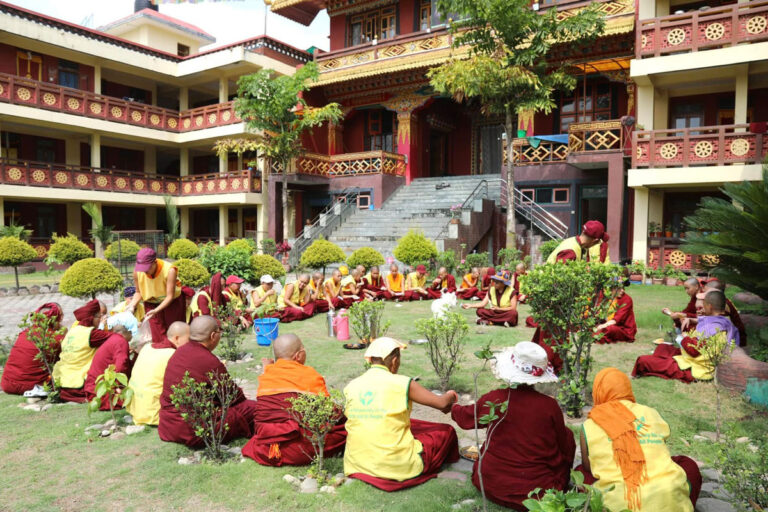
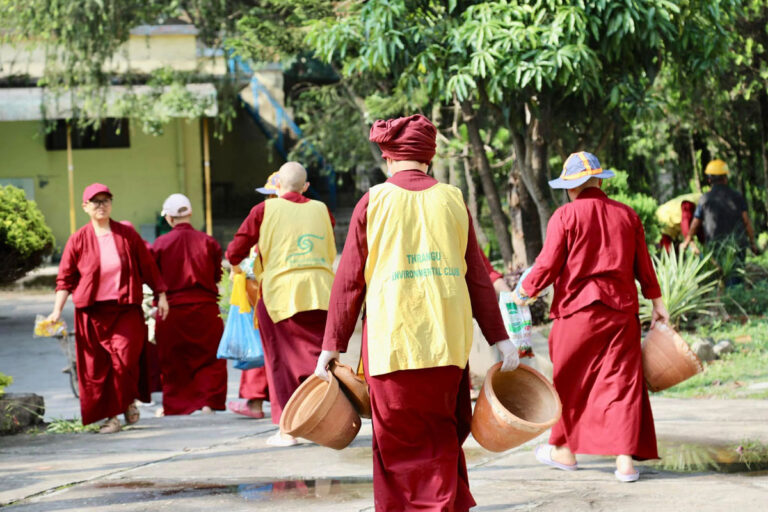
The Vegetable Gardens
Seven Nuns Join 21-Year Retreat and Study Program.
The seven outstanding young nuns from Thrangu Tara Abbey, who are disciplined in conduct and sharp in wisdom, have been selected to enter the Thrangu Global Retreat Center (Thrangu Sekhar Retreat Center), where they will engage in a traditional twenty-one-year retreat focused on the practices of sutra, mantra, and tantra, with the purpose of receiving complete training in listening, contemplation, and meditation.
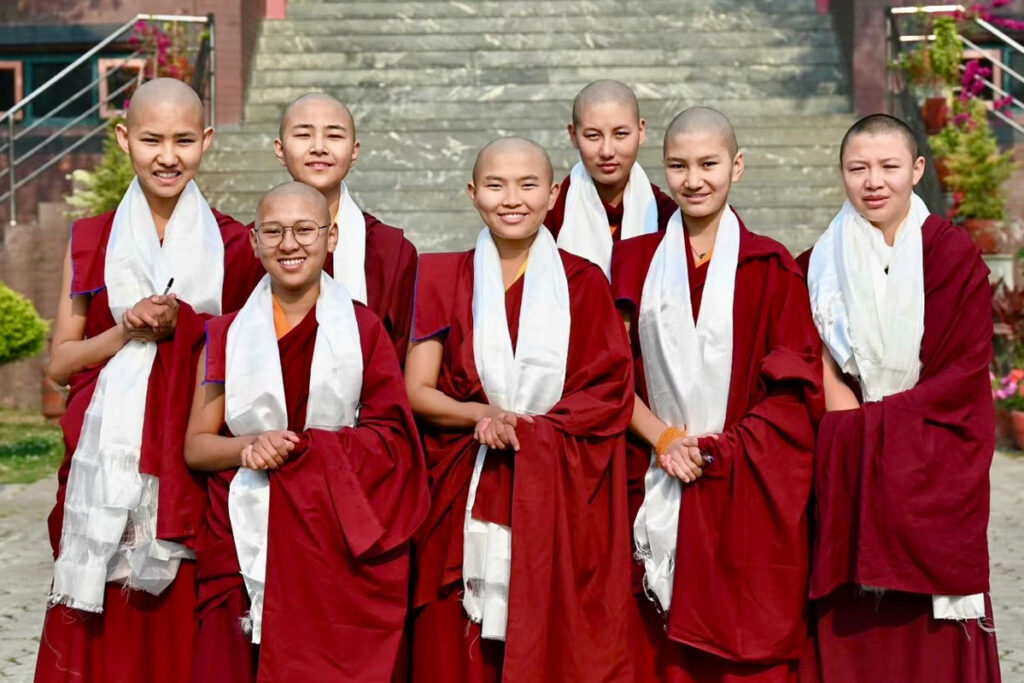
New construction
As the number of nuns has increased over the years, Thrangu Tara Abbey has had to adapt to avoid overcrowding and provide expanded facilities. Currently, we are in the process of constructing new buildings there, located just behind the monastery. The new building will include living quarters for the nuns, a classroom, a library, a meeting room, and a large assembly hall.
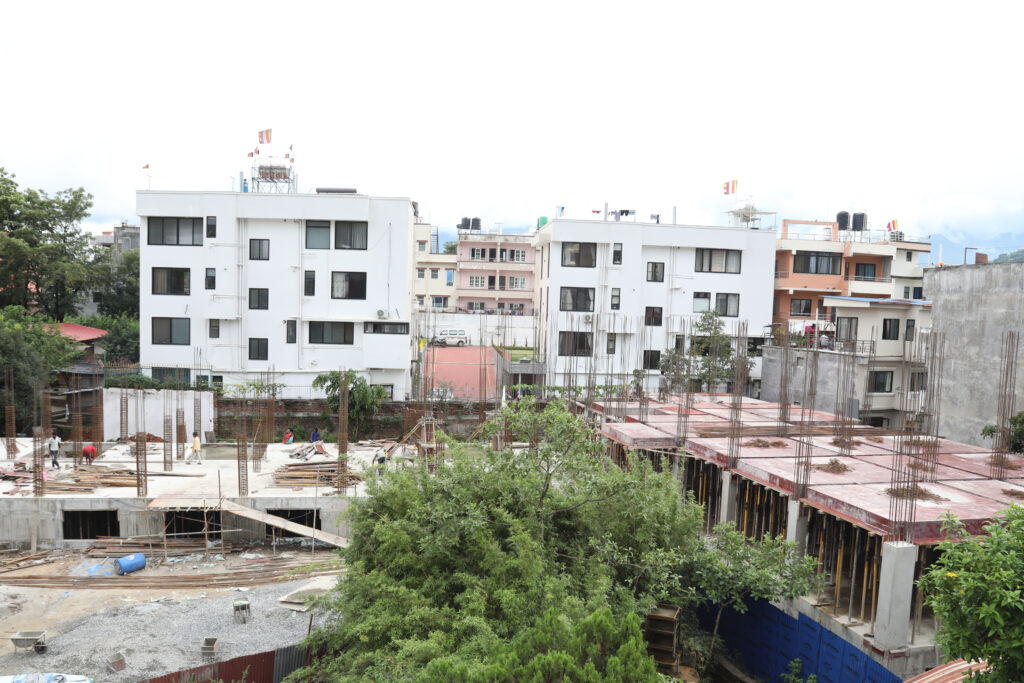
Address:
Thrangu Tara Abbey Nunnery
Sitapaila-5, Nāgārjuna Municipality, Swayambhu
P.O. Box 1287, Kathmandu, Nepal
Phone: 977-1-4287428/ 4276715
Email: thrangu_taraabbey@yahoo.com
Facebook: /thrangutaraabbey
Chairman: Ven. Tulku Damcho Rinpoche
Vice Chairman: Khenpo Karma Chogyal
Thrangu Tara Abbey Retreat Center, Sher Gonpa
Braka, Manang, Nepal.
